Eumorpha labruscae labruscae
|
|
Updated as per
AN ANNOTATED CHECKLIST OF THE SPHINGIDAE OF BOLIVIA, October 2007
Updated as per http://www.pybio.org/SPHINGINAE.htm (Paraguay), October 2007
Updated as per More, Kitching and Cocucci's Hawkmoths of Argentina 2005, October, 2007
Updated as per http://biological-diversity.info/sphingidae.htm (Belize), November 2007
Updated as per Fauna Entomologica De Nicarauga, November 2007
Updated as per The Known Sphingidae of Costa Rica, November 2007
Updated as per personal communication with Shelby Heeter, (Islamorada, Monroe County, Florida, December), January 2009
Updated as per personal communication with Jose Monzon (Guatemala); May 2009
Updated as per personal communication with Ezequiel Bustos (Aguas Blancas, Salta, Argentina, 405m); December 2009
Updated as per personal communication with Gregory Nielsen (Villavicencio, Meta, Colombia, 500m, June 20, 2011); June 30, 2011
Updated as per personal communication with Anton Sorokin (Dominican Republic, June 17, 2010); Ocotber 2, 2012
Updated as per personal communication with Sergio D. Ríos Díaz in CATÁLOGO DE LOS SPHINGIDAE (INSECTA: LEPIDOPTERA) DEPOSITADOS EN
EL MUSEO NACIONAL DE HISTORIA NATURAL DEL PARAGUAY; sent to me in July 2014 by Sergio D. Ríos Díaz.
Updated as per personal communication with Joanna Rodriguez Ramirez (Jujuy; Argentina), January 21, 2015
Updated as per personal communication with Ezequiel Bustos (Shilap revta. lepid. 43 (172) diciembre, 2015, 615-631 eISSN 2340-4078 ISSN 0300-5267), January 4, 2016
Updated as per personal communication with Jean Haxaire (La Vega, Dominican Republic); March 14, 2017
Updated as per personal communication with Francierlem Olivera (Extremoz, Rio Grande do Norte, Brazil), larva, pupa, adult moth; September, 2020
|
Eumorpha labruscae labruscae
you-MOR-fuhMluh-BRUS-kay
(Linnaeus, 1758)
Sphinx

Eumorpha labruscae, Extremoz. Rio Grande do Norte, Brazil,
courtesy of Francierlem Oliveira
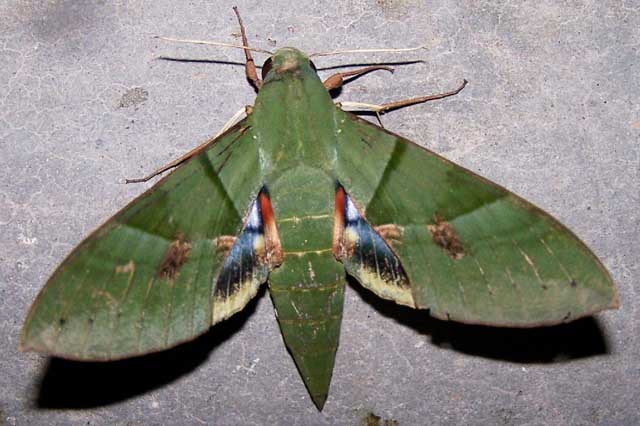
Eumorpha labruscae Paraguay, PYBIO
This site has been created by
Bill Oehlke.
Comments, suggestions and/or additional information are welcomed by Bill.
| TAXONOMY:
Superfamily: Sphingoidea, Dyar, 1902
Family: Sphingidae, Latreille, 1802
Subfamily: Macroglossinae, Harris, 1839
Tribe: Philampelini, Burmeister
Genus: Eumorpha, Hubner, [1807]
Species: labruscae labruscae, (Linnaeus, 1758) |
DISTRIBUTION: Eumorpha labruscae labruscae, Gaudy Sphinx Moth, (LFW = 51mm) flies in America, and although primarily a
tropical species, it has been taken as far north as Saskatchewan and Manitoba (Richard Westwood, Dept. of Biology, University of Winnipeg)
as a stray. In South America, it is taken at least as far south as
Bolivia: Beni, La Paz, Cochabamba, Santa Cruz;
Paraguay: Asuncion, Alto Paraguay, Boqueron, Presidente Hayes, Concepcion, Canindeyu, Central, Amambay, Cordillera,
Caaguazu, Alto Parana, Guaira, Paraguari, (possibly Misiones and Itapua (WO??));
Argentina: Buenos Aires, Cordoba, Corrientes, Entre Rios, Misiones, Tucuman, Salta (405m EB).
See larval images from Campo Grande, Mato Grosso do Sul, Brazil: probably everywhere; Extremoz, Rio grande do Norte (Frabncierlem Oliveira).
Eumorpha labruscae, February, Everglades, Florida, courtesy of Werner Bollmann, Naturfotografie. |
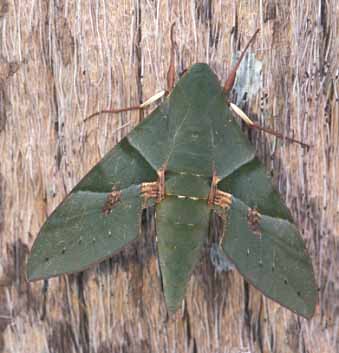 |
It is also found throughout Central America:
Mexico;
Belize: Corozol, Cayo, Stan Creek, Toledo;
Guatemala: Izabal;
Honduras: Atlantida;
Nicaragua: Masaya, Granada, Isla de Ometepe, Zelaya, Rio San Juan;
Costa Rica: Guanacaste, Limon, Alajuela,
Punatarenas, San Jose, Heredia;
Panama.
In South America it also flies in
Argentina: Buenos Aires, Cordoba, Corrientes, Entre Rios, La Rioja, Misiones, Mendoza, Rio Neuquen, Salta, Tucuman; Jujuy (JRR)
Uruguay;
Colombia: Villavicencio, Meta, 500m;
Ecuador: Morona-Santiago (Nueva Tarqui);
Peru.
With very strong migrating tendencies this
moth can probably be found just about anywhere.
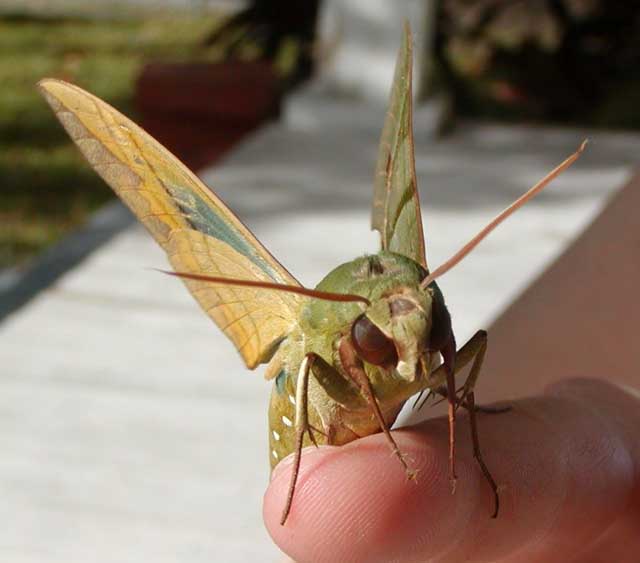
Eumorpha labruscae, December 29, 2007, Plant City, Hillsborough County,
Florida,
courtesy of Marc and Kurtis Cook.
It should also be throughout the Carribean:
Dominican Republic;
Puerto Rico;
Virgin Islands;
St. Kitts;
Montserat;
Guadelupe;
Dominica;
Martinique;
St. Lucia: Dennery;
Bonaire;
and other islands.
Visit Eumorpha labruscae, Islamorada, Monroe County, Florida,
December 2004, courtesy of Kevin and Shelby Heeter.
"Eumorpha" means well-formed. The species name
"labruscae" comes from the name for wild grape, one of the larval
hosts.
FLIGHT TIMES AND PREFERRED FOOD PLANTS:
Eumorpha
labruscae labruscae adults are on the wing from at various times throughout the year.
Sergio Rios Diaz confirms flights in Paraguay in January-February, July-August, October-November.
Adults nectar at various flowers
including Asystasia gangetica at dusk. Gregory Nielsen reports a June 20, 2011, flight of very common Eumorpha
labruscae in Villavicencio, Meta, Colombia, elevation 500m.
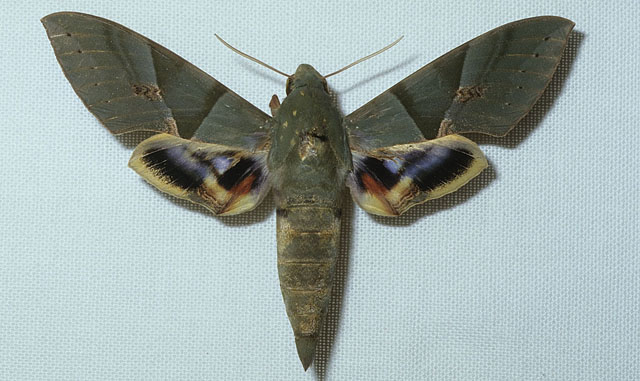
Eumorpha labruscae male, courtesy of Hubert Mayer
copyright.
ECLOSION, SCENTING AND MATING:
Pupae wiggle to surface
just prior to eclosion. Females call at night, and males
(below) fly into the wind to pick up and track the pheromone plume.
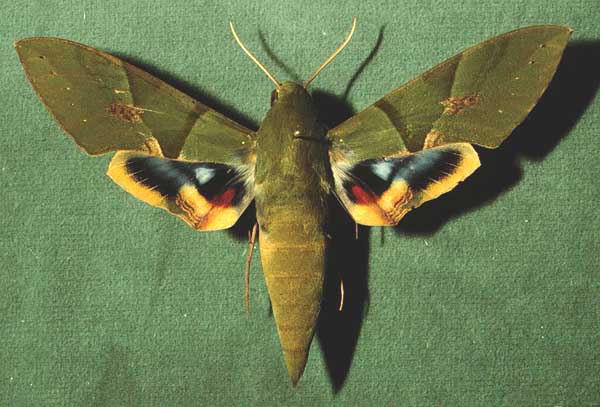
Eumorpha
labruscae labruscae male courtesy of Dan Janzen.
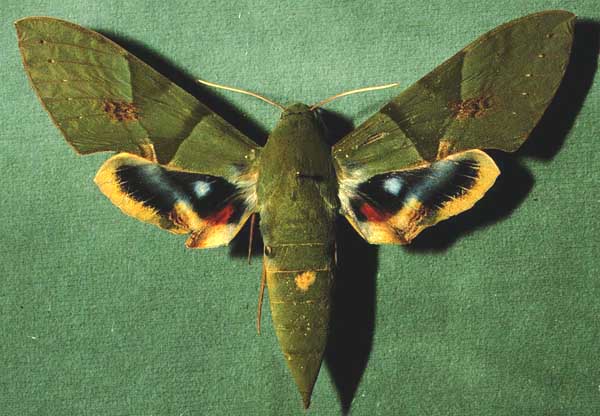
Eumorpha labruscae labruscae female courtesy of Dan Janzen.
EGGS, LARVAE AND PUPAE:
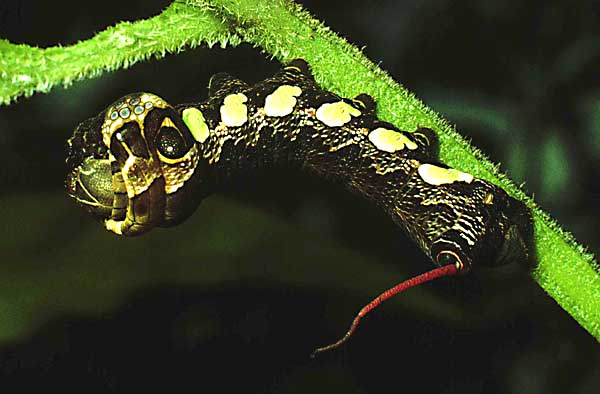
Eumorpha labruscae labruscae larva courtesy of Dan Janzen.
In Florida larvae have been found on Possum Vine
(Cissus sicyoides).
Cissus incisa, Cissus verticillata, Eupatorium odoratum,
Ludwigia,
Magnolia, Parthenocissus and Vitis vinifera are all reported hosts.
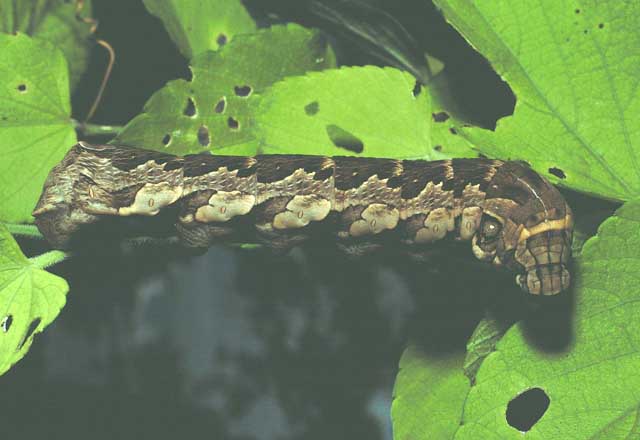
In Costa Rica, Dan Janzen reports larvae on
Cissus pseudosicyoides and Cissus alata. There is a
striking resemblance to a snake's head and eye, and a flattening of
the thoracic segments when the head is not retracted.
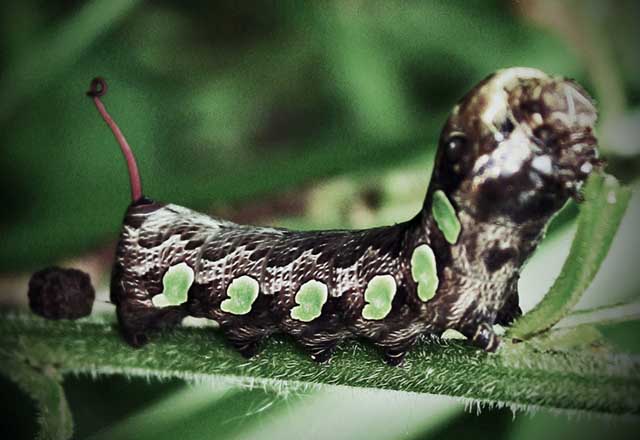
Eumorpha labruscae, Paleo Hammock Preserve, Fort Pierce, St. Lucie County, Florida,
third or fourth instar, June 29, 2013, courtesy of Chet Smith, via Daniel Marlos.
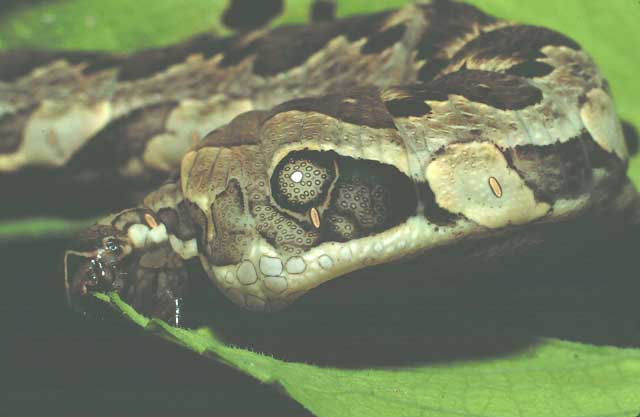
Dan Janzen images.
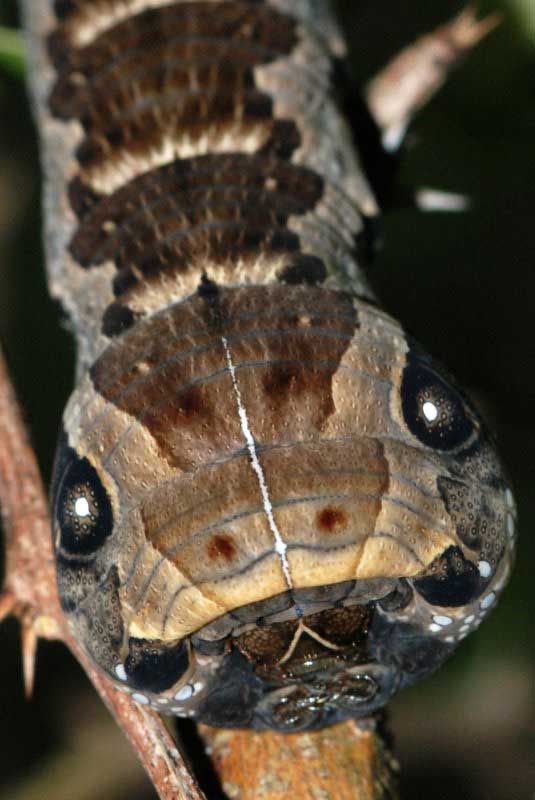
Eumorpha labruscae fifth instar larva, Dominican Republic,
June 17, 2010, courtesy of Anton Sorokin.
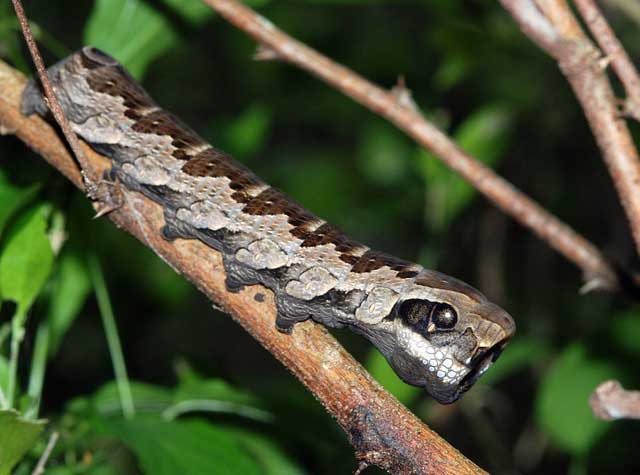
Eumorpha labruscae fifth instar larva, Dominican Republic,
June 17, 2010, courtesy of Anton Sorokin.

Eumorpha labruscae, final instar, Extremoz. Rio Grande do Norte, Brazil,
courtesy of Francierlem Oliveira
The pupa is reddish brown like Manduca occulta and has a distinctive dark elongate spot in the middle of each wing cover.

Eumorpha labruscae, pupa, Extremoz. Rio Grande do Norte, Brazil,
courtesy of Francierlem Oliveira.
Those who first published descriptions and assigned scientific names to many insects, simply chose names of
biblical or mythological origin without any real descriptive qualities. Their purpose was simply to set a standard for purposes
of identification by assigned name. On some occasions, names, mostly of Latin or Greek origin, were chosen to signify a particular
character of the genus or of an individual species.
The genus name "Eumorpha" means well-formed.
The species name, "labruscae", might refer to a larval host, Vitis labruscae, the Fox Grape.
The pronunciation of scientific names is troublesome for many. The "suggestion" at the top of the page is merely a suggestion. It is based on
commonly accepted English pronunciation of Greek names and/or some fairly well accepted "rules" for latinized scientific names.
The suggested pronunciations, on this page and on other pages, are primarily put forward to assist those who hear with internal ears as they read.
There are many collectors from different countries whose intonations and accents would be different.
Visit Eumorpha labruscae by Jean Haxaire: Jamaica and Dominican Republic.
Visit Eumorpha labruscae, Curitiba, Parana, Brazil, courtesy of Surian Persona Serbake.
Return to U. S. A. Table
Return to Philampelini Index
Return to Sphingidae Index
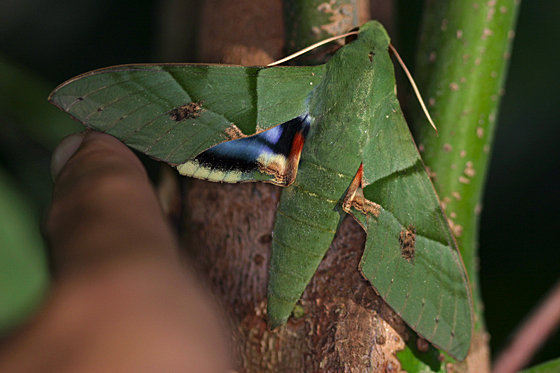
Eumorpha labruscae, South Florida,
courtesy
of Alan Chin-Lee.
Use your browser "Back" button to return to the previous page.
This page is brought to you by
Bill Oehlke and the
WLSS. Pages are on space rented from Bizland. If you would like
to become a "Patron of the Sphingidae Site", contact Bill.
Please send sightings/images to Bill. I will do my best to respond to requests for identification help.
Enjoy one of nature's wonderments: Live
Saturniidae (Giant Silkmoth) cocoons.
 | 
Show appreciation for this site by clicking on flashing butterfly to the left.
The link will take you to a page with links to many insect sites. |
This website has been created and is maintained by Bill Oehlke without government or institutional financial assistance. All expenses, ie., text reference
support material, webspace rental from Bizland, computer repairs/replacements, backups systems, software for image adjustments (Adobe Photoshop; L-View),
ftp software, anti-virus protection, scanner, etc. are my own.
I very much appreciate all the many images that have been sent to me, or of which I have been granted permission to copy and post from other websites.
All images on this site remain the property of respective photographers.
If you would like to contribute to the maintenance of this website by sending a contribution to
Bill Oehlke
Box 476
155 Peardon Road
Montague, Prince Edward Island, C0A1R0
Canada
your donation would be much appreciated and would be used for
1) paying for webspace rental;
2) paying for computer maintenance and software upgrades;
3) purchases of additional text reference material (journals and books) in anticipation of expanding the site to a worldwide Sphingidae site;
4) helping to pay my daughter's tuition (completed spring 2013); with anything left over going to humanitarian aid.
If you are mailing a check from USA, please use $1.25 (2015 rate) postage. Donations can also be made through Paypal via the button below.

















